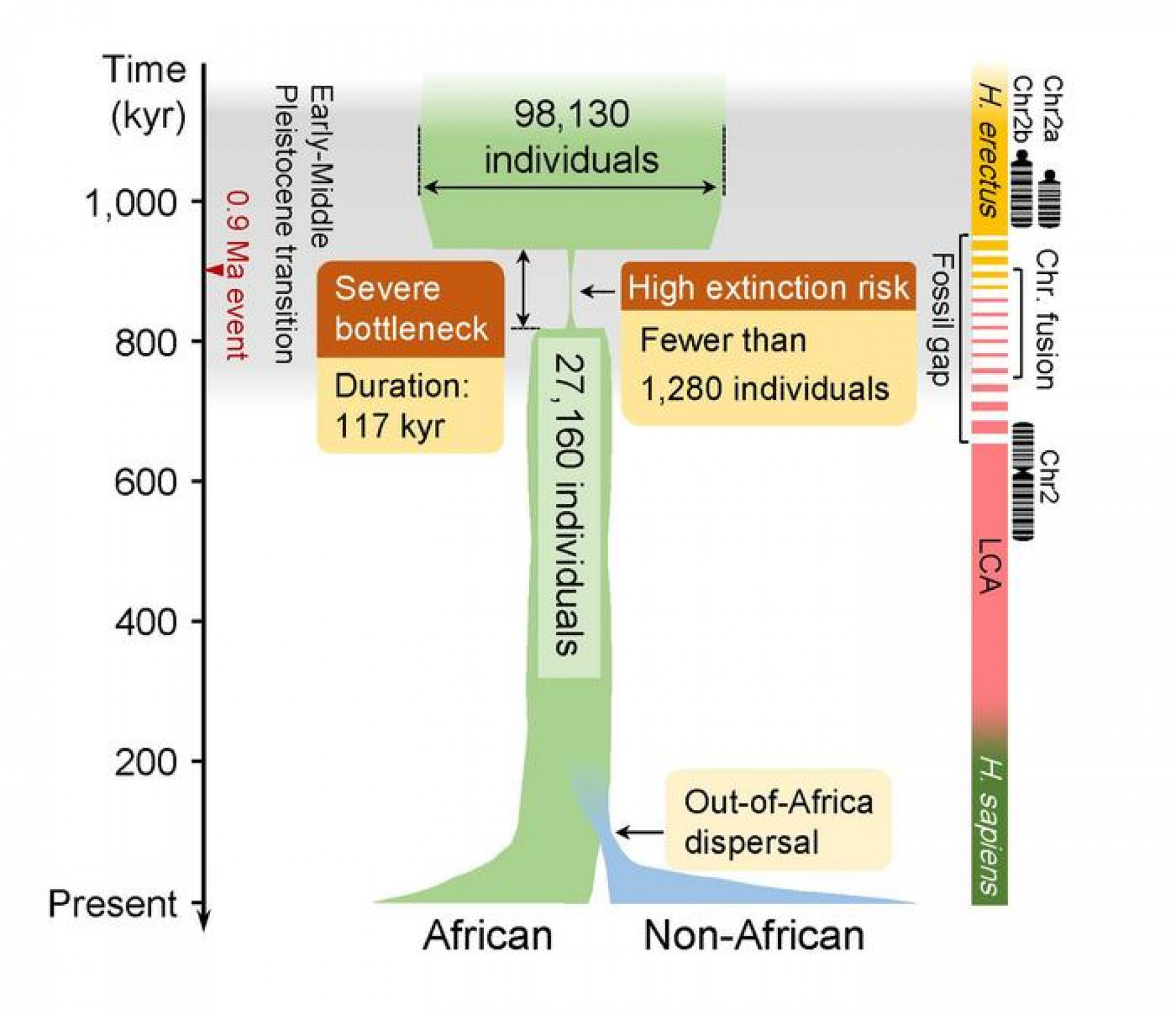Science & Technology
The Bottleneck in Human Evolution
- 08 Sep 2023
- 5 min read
For Prelims: Fast infinitesimal time coalescent process (FitCoal), Genomic Sequencing
For Mains: Genome Sequence and its Significance, Population bottleneck in human evolution and its implications for modern humans.
Why in News?
Recently, a study published in Science sheds light on a crucial period in human evolution marked by a population bottleneck, providing insights into the challenges our early ancestors faced and the genetic changes that shaped modern humans.
- Researchers from China, Italy, and the U.S. used a novel genomic analysis technique called Fast Infinitesimal Time Coalescent Process (FitCoal) to examine this bottleneck.
FitCoal:
- It is a method of inferring ancient population size and demographic history by using modern-day human genomic sequences and calculates the composite likelihood for the site frequency spectrum (SFS), which is the distribution of allele frequencies in the sequences.
- FitCoal can detect severe bottlenecks and speciation events in human evolutionary history that are otherwise difficult to observe from the fossil record.
Genome Sequencing:
- Genome sequencing is figuring out the order of DNA nucleotides, or bases, in a genome—the order of Adenine, Cytosine, Guanines, and Thymine that make up an organism's DNA.
- The genome sequence will represent a valuable shortcut, helping scientists find genes much more easily and quickly.
- A genome sequence does contain some clues about where genes are, even though scientists are just learning to interpret these clues.
What are the Key Highlights of the Study?
- Population Bottleneck:
- A population bottleneck is a sharp reduction in the size of a population due to environmental events or human activities that kill or prevent the reproduction of a large percentage of the population.
- This reduces the genetic diversity and the ability to adapt to changing conditions of the remaining population.
- The study reveals that a severe population bottleneck occurred between 800,000 to 900,000 years ago, nearly driving the human species to the brink of extinction.
- During this bottleneck, only approximately 1,280 breeding individuals sustained the entire human population, and this situation persisted for about 117,000 years.
- A population bottleneck is a sharp reduction in the size of a population due to environmental events or human activities that kill or prevent the reproduction of a large percentage of the population.
- Causes of Bottleneck:
- Environmental Factors:
- Glaciation events, changes in temperature, and severe droughts were suggested as reasons for the downturn in the size of the human ancestral population.
- The study suggests that humans persisted in presumably dangerous conditions during the bottleneck period, around 930,000-813,000 years ago.
- Loss of other species, potentially food sources for ancestral humans, also contributed to the bottleneck.
- Glaciation events, changes in temperature, and severe droughts were suggested as reasons for the downturn in the size of the human ancestral population.
- Loss of Genetic Diversity:
- Early human ancestors experienced significant loss of life during the bottleneck period.
- This resulted in a substantial loss of genetic diversity, with an estimated 65.85% of humans' current genetic diversity potentially lost during the early to middle Pleistocene era (from two million to 11,000 years ago).
- Environmental Factors:
- Speciation Event:
- The bottleneck event in human evolution resulted in the fusion of two ancestral chromosomes, forming chromosome 2 in modern humans, a distinct trait not found in other primates.
UPSC Civil Services Examination, Previous Year Questions (PYQs)
Prelims
Q. With reference to agriculture in India, how can the technique of ‘genome sequencing’, often seen in the news, be used in the immediate future? (2017)
- Genome sequencing can be used to identify genetic markers for disease resistance and drought tolerance in various crop plants.
- This technique helps in reducing the time required to develop new varieties of crop plants.
- It can be used to decipher the host-pathogen relationships in crops.
Select the correct answer using the code given below:
(a) 1 only
(b) 2 and 3 only
(c) 1 and 3 only
(d) 1, 2 and 3
Ans: (d)







